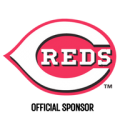Keeping your home’s air clean and breathable is about more than just dusting and vacuuming. The quality of air flowing from your home’s HVAC system makes a major difference as well. Changing out old, dirty furnace filters regularly is one of the simplest ways to keep your indoor air fresh and your family healthy.
When to Swap Furnace Filters
The standard recommendation from most HVAC companies is to replace your furnace filters every three months. However, some types of filters may need changing more often depending on use and your home’s environmental factors.
As a general rule of thumb, you should check your home air filter at least every six weeks and replace it if you notice any of the following signs it’s time for a new one:
Decreased Airflow from Vents
If you start noticing the air supply from your heating and cooling vents seems weaker or slower, your filter is likely clogged with debris. Dirty filters cause restriction and back-pressure, preventing proper air circulation. Listen for changes in the sound of air coming through the vents as well. Any whistling, rumbling, or unusual fan noises point to excess debris accumulation in the filter.
Visible Dirt and Debris Buildup
Pull out your furnace filter and visually inspect both sides for a light coating of dust or signs of debris clumping and buildup. Large particles like hair, lint, and even pet fur will embed in the filter fibers over time as airflow passes through. If you notice the pleats appearing brown or gray rather than clean white, that’s your cue to swap in a fresh filter.
Filter Appears Clogged or Coated
Inspect the filter in bright lighting from various angles to check for an overall clogged appearance. When particles accumulate and bond to the filter fibers, they take on a darker, dirtier, and seemingly denser look. You may even spot some areas that appear slick or shiny from grease-related residues depositing over many weeks of use. A filter with high debris adhesion and resinous residues requires immediate replacement.
Replacing filters on a regular schedule prevents excessive debris buildup through the HVAC system over months of runtime. It also ensures your furnace or air conditioner doesn’t have to work against excessive resistance and airflow restrictions. Keeping your filters changed consistently every 2-3 months keeps your entire heating and cooling system running cleanly and efficiently.
If you want a handy reminder for your next filter change, add a recurring alert on your smartphone’s calendar app every 10-12 weeks. That way, you never lose track of this essential maintenance task season after season.
Furnace Filter Types
When selecting replacement HVAC air filters, you typically have three main options:
Disposable Pleated Filters
The most common and affordable option, pleated filters trap particles as air passes through. Available in different thicknesses for basic filtration or high MERV ratings to capture smaller particles. Need frequent replacing.
Pros: Inexpensive, readily available
Cons: Short lifespan, lower air filtration compared to other designs
Reusable Pleated Air Filters
It has a similar pleated style as disposable filters but can be washed and reused. Made of materials like foam, metal, or polyester mesh. It must be replaced eventually when washing no longer removes debris.
Pros: Reusable, higher filtration efficiency rating than disposable pleated filters
Cons: Higher upfront cost, requires regular washings
HEPA Furnace Filters
HEPA (high-efficiency particulate air) home air filters capture the smallest bacteria particles, pollen, and pet dander. Recommended for allergy and asthma sufferers. Generally more expensive but longer lasting.
Pros: Highest filtration, best for allergies/asthma
Cons: More expensive, higher air resistance
Step-By-Step Filter Replacement
Replacing a furnace filter is a quick project once you know the steps. Be sure to turn off your HVAC system at the breaker box or by shutting off power to the furnace before beginning:
- Locate the filter compartment cover, which is typically found near the blower unit or vent exit.
- Release the cover clamps or screws and open outward.
- Slide out the old filter, checking for debris buildup in the compartment.
- Insert new filter arrow side toward blower motor for proper airflow direction.
- Close the filter compartment and tighten clamps or replace screws.
- Restore power to the furnace and test operation.
Tips for Furnace Filter Care
Besides swapping filters regularly, a few other maintenance tips will keep your HVAC system heating and cooling efficiently.
- Vacuum registers and vents seasonally to remove built-up debris and dust.
- Have an HVAC technician or air conditioning specialist deep clean your ducts every 3-5 years. Keep track of your last service by documenting it on the service panel.
- Call a professional immediately about abnormal furnace noises, limited airflow, or temperature fluctuations in your home. Don’t delay the diagnosis of larger underlying issues.
Proper Filter Disposal
Old furnace filters contain accumulated pollen, bacteria, and other allergens you don’t want circulating back into your indoor air. Seal used filters in plastic bags for disposal to prevent the release of debris and microbes. Most standard HVAC filters can go directly into your normal waste receptacles.
For HEPA furnace filters, electronic filters, or other types containing fiberglass, check guidelines in your area on whether these require special disposal. Wear gloves when handling used HEPA filters to avoid skin irritation.
Changing out dirty, clogged home air filters with fresh furnace filter replacements takes only a few minutes. But maintaining this simple routine every 2-3 months prevents microscopic particles, allergens, and pollutants from constantly circulating through your air, improving your indoor air quality.
The Logan Difference
As a family-owned HVAC company, Logan A/C & Heat strives to stand out for each customer positively. Our techs undergo extensive training and certification programs, arriving prepared with all necessary parts and tools.
We emphasize clear communication at every step—from prompt quotes to post-job walkthroughs. Experienced install managers oversee checklist completion, and we provide personalized demos so you understand your new system inside out.
Giving back through community donations and supporting local businesses are central to our values. Contact Logan A/C & Heat to experience our customer-focused approach for yourself!
Frequently Asked Questions (FAQs)
How often should I replace my furnace filter?
For standard 1-inch pleated filters, every 2-3 months is ideal. Thicker 4-5 inch filters may only need replacement every six months. Refer to your filter product specs.
What MERV rating should I choose?
MERV 8-12 works for most homes. MERV 13+ are better for allergies but require system compatibility.
Why does my new filter look dirty so fast?
This is normal as it picks up debris left behind by old filters. It should slow down after 1-2 initial changes.
What if my filter gets stuck?
Check for proper sizing and clear debris buildup around compartment walls before reinserting.
Can I reuse electrostatic filters?
No – these are designed to remain permanently charged. Wash and reuse risks losing filtration capacity.





















